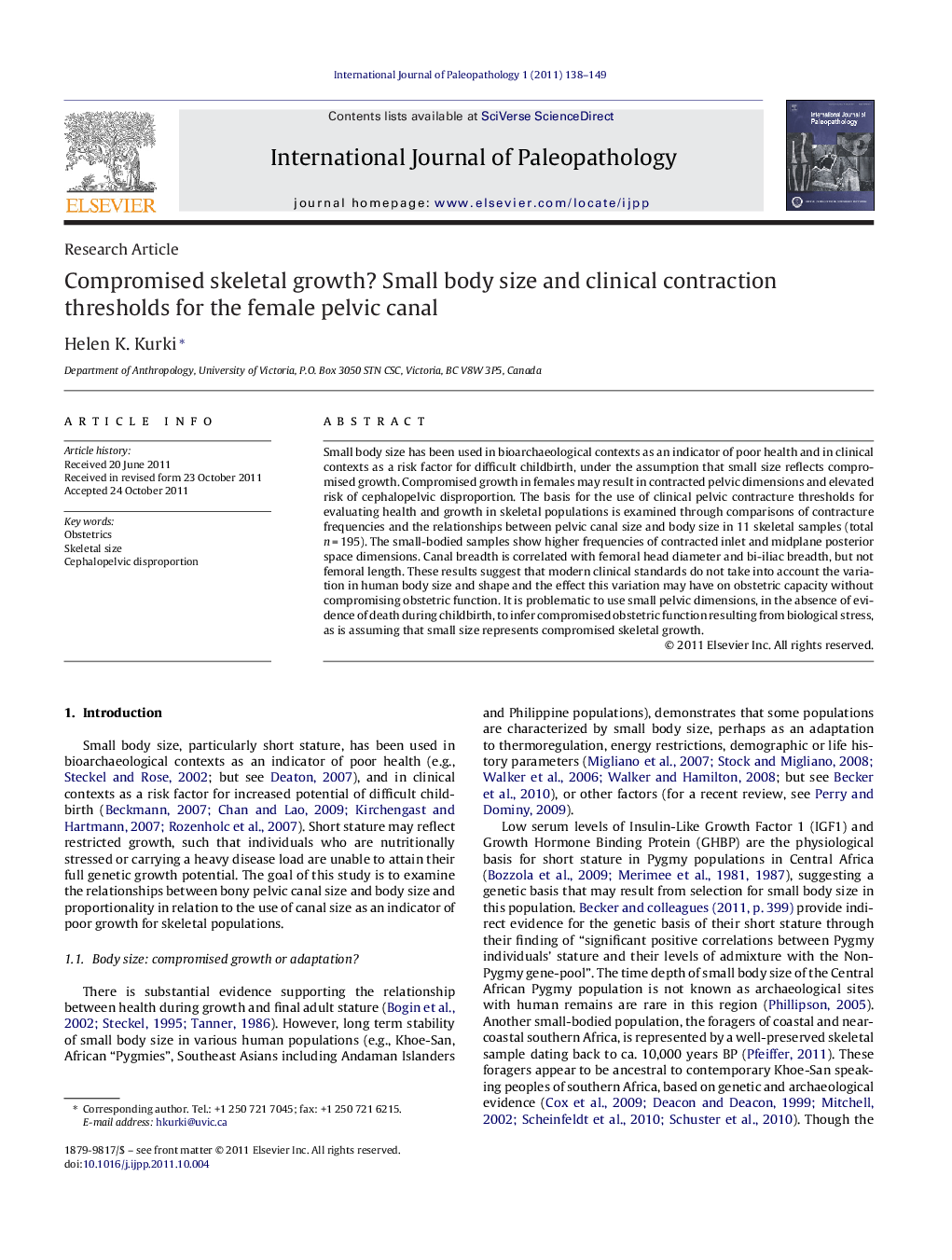| Article ID | Journal | Published Year | Pages | File Type |
|---|---|---|---|---|
| 101353 | International Journal of Paleopathology | 2011 | 12 Pages |
Small body size has been used in bioarchaeological contexts as an indicator of poor health and in clinical contexts as a risk factor for difficult childbirth, under the assumption that small size reflects compromised growth. Compromised growth in females may result in contracted pelvic dimensions and elevated risk of cephalopelvic disproportion. The basis for the use of clinical pelvic contracture thresholds for evaluating health and growth in skeletal populations is examined through comparisons of contracture frequencies and the relationships between pelvic canal size and body size in 11 skeletal samples (total n = 195). The small-bodied samples show higher frequencies of contracted inlet and midplane posterior space dimensions. Canal breadth is correlated with femoral head diameter and bi-iliac breadth, but not femoral length. These results suggest that modern clinical standards do not take into account the variation in human body size and shape and the effect this variation may have on obstetric capacity without compromising obstetric function. It is problematic to use small pelvic dimensions, in the absence of evidence of death during childbirth, to infer compromised obstetric function resulting from biological stress, as is assuming that small size represents compromised skeletal growth.
► Clinical pelvic contraction thresholds and body size in females is examined in skeletal samples. ► Smaller-bodied samples have higher percentages of females with pelvic contraction. ► Femoral head diameter and bi-iliac breadth positively correlated with canal breadths. ► Pelvic contraction cannot be used uncritically to assess skeletal growth or risk in childbirth.
